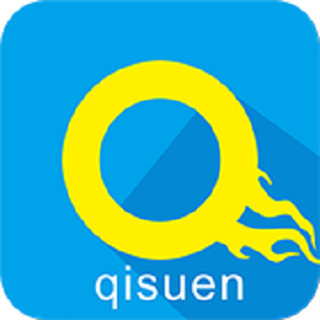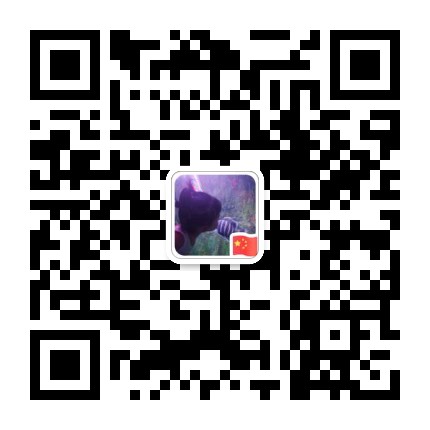
文章发布:奇速英语 发布时间:Oct 24, 2025 4:42:57 PM 访问量:27

1. My Experience with AI-Powered English Learning As technology reshapes every aspect of our lives, education has become one of the most exciting areas of innovation—and my recent experience with an AI-powered English learning app has completely changed how I approach language study. What started as a casual try to improve my TOEFL reading skills turned into a journey that taught me not only about grammar and vocabulary but also about how intelligent tools can personalize learning in ways traditional methods never could. The app, called "EduSmart," uses machine learning to analyze users’ strengths and weaknesses. On my first login, it asked me to take a diagnostic test covering reading comprehension, listening, and writing. Within 10 minutes, it generated a detailed report showing that my biggest challenges were understanding long complex sentences in academic articles and using advanced conjunctions correctly. What impressed me most was its ability to tailor lessons to my needs: instead of giving me generic exercises, it recommended passages on environmental science (a topic I’m passionate about) and designed targeted drills for the grammar points I struggled with, such as inverted sentences and participial phrases. One feature that stood out was the AI tutor’s real-time feedback. When I wrote an essay about "climate change’s impact on marine life," the tutor not only pointed out minor errors in subject-verb agreement but also suggested more precise vocabulary—for example, replacing "very important" with "crucial" and "help" with "facilitate." It even explained why certain sentence structures worked better: "Using a participial phrase at the beginning of your sentence ('Having studied recent research on coral bleaching') creates a stronger logical connection to your main argument than starting with a simple clause." This kind of detailed guidance helped me see that writing well isn’t just about avoiding mistakes; it’s about choosing structures that enhance clarity and persuasion. After three months of using the app, I noticed a significant improvement in both my test scores and my confidence. My TOEFL reading score increased by 15 points, and I found myself able to participate more actively in my school’s English debate club—something I would have hesitated to do before. What I value most, however, is the way the app taught me to be a more self-directed learner. By showing me exactly where I needed to focus my efforts, it turned the overwhelming task of "improving English" into a series of manageable, 成就感 - driven steps. In a world where technology is often criticized for making people lazy, my experience with EduSmart proves that when used wisely, AI can be a powerful tool for growth. It doesn’t replace teachers or hard work, but it does make learning more efficient, engaging, and personalized—something every student can benefit from. 短文分析 2. Our School’s "Plastic-Free Campus" Campaign Last semester, our school launched a "Plastic-Free Campus" campaign to raise awareness about environmental pollution and encourage sustainable living—and being part of the organizing team turned out to be one of the most rewarding experiences of my high school years. What began as a small idea proposed by a group of environmental science students quickly grew into a school-wide movement that not only reduced plastic waste but also brought our community closer together. The first step we took was to conduct a survey to understand how much plastic our school used. Over the course of a week, we counted everything from disposable water bottles in the cafeteria to plastic packaging on snacks sold at the school store. The results were shocking: on average, each student used 5 plastic items per day, adding up to over 10,000 pieces of plastic waste per month. Armed with this data, we held a series of assemblies where we showed videos of ocean pollution caused by plastic and invited a local environmentalist to speak about how small changes—like using reusable bottles or bringing lunch in metal containers—could make a big difference. To make the campaign practical, we worked with the school administration to implement several key changes. We installed water refill stations around campus so students could fill up reusable bottles, and we asked the cafeteria to replace plastic utensils with compostable ones made from cornstarch. We also set up a "swap table" where students could exchange old reusable items—such as backpacks, lunch boxes, and water bottles—for ones they liked better, reducing the need to buy new products. One of our most popular initiatives was the "Plastic-Free Challenge," where students who went a week without using single-use plastic received a small prize, like a custom-made tote bag with the campaign’s slogan: "Small Steps, Big Impact." What surprised me most about the campaign was how quickly it gained momentum. At first, some students were hesitant to change their habits—complaining that bringing a reusable bottle was "inconvenient" or that compostable utensils "didn’t work as well." But as more people joined in, it became a trend: I saw students showing off their colorful reusable bottles in class, and even teachers started bringing homemade lunch in glass containers. By the end of the semester, our survey showed that plastic waste had decreased by 60%, and the school store had stopped selling snacks in plastic packaging altogether. Looking back, what made the campaign a success wasn’t just the changes we implemented—it was the way it made everyone feel like they were part of something bigger. It taught me that environmental protection isn’t just the responsibility of scientists or politicians; it’s something every single person can contribute to, even in small ways. And as we prepare to expand the campaign to local elementary schools next year, I’m more convinced than ever that young people have the power to drive real, positive change in the world. 短文分析 3. Reviving Traditional Paper-Cutting with a Modern Twist When my art teacher assigned a "cultural inheritance" project last month, I initially felt stuck. How could I make a traditional art form like paper-cutting—something my grandmother used to do when I was a kid—feel relevant to my generation? After weeks of research and experimentation, I found the answer: by blending its age-old techniques with modern themes, I didn’t just create a series of artworks; I discovered a way to bridge the gap between the past and the present. Paper-cutting, a folk art with a history of over 1,500 years in China, is known for its intricate patterns and symbolic meanings—think red paper cut into shapes of flowers, dragons, or Chinese characters representing good luck. But as I visited local craft markets and talked to elderly artisans, I realized that while the art form is beloved by many, it’s struggling to attract young people. Most paper-cut works still focus on traditional themes, and few use the bold colors or contemporary subjects that appeal to teenagers. That’s when I decided to try something different: I would create paper-cut pieces that celebrated modern life—from skateboarders and musicians to scenes of students working on laptops—while keeping the traditional techniques of folding and cutting intact. The process wasn’t easy. Traditional paper-cutting uses simple tools: a pair of sharp scissors, a pencil, and red or black paper. But to create the detailed lines needed for modern subjects—like the wheels of a skateboard or the strings of a guitar—I had to practice for hours to master the art of "fractional cutting," a technique where you fold the paper multiple times to create symmetrical patterns. I also experimented with new materials: instead of just using red paper, I tried neon-colored sheets and even transparent plastic, which gave my works a fresh, modern look. One of my favorite pieces was a portrait of my friends playing in a school band: I used yellow paper for the drums, blue for the guitar, and green for the singer’s hair, and added small LED lights behind the cutouts to make the colors glow. When I displayed my works at the school’s art exhibition, the response was overwhelming. Students stopped to take photos of the pieces, and many asked if I could teach them how to do paper-cutting. Even my grandmother, who came to see the exhibition, was impressed: "I never thought paper-cutting could look like this," she said, running her finger over the edge of the skateboard piece. "You’ve made an old art form young again." What this project taught me is that cultural inheritance isn’t about preserving the past exactly as it was—it’s about finding ways to make traditional art relevant to the world we live in. By blending old techniques with new ideas, we can ensure that art forms like paper-cutting don’t just survive but thrive. And as I continue to work on new pieces—next, I want to create a series about space exploration—I’m excited to see where this journey of creativity and tradition will take me. 短文分析
分享本文后加客服,获赠“课本单词速记卡”或天天更新的“英语时文阅读小程序”畅读卡一张!(客服微信:13980503458/17760376675/13982203753/18054788785)

相关推荐
解锁英语阅读 / 写作秘籍,新学期告别 “英语焦虑”,奇速英语冬令营来袭!
高中英语优美短文三篇:语法高阶运用与时代场景的深度融合
浙江省杭州市/宁波市/温州市奇速英语冬令营:学玩双收,孩子英语逆袭的黄金选择
江西省南昌市奇速英语冬令营:学玩双收,孩子英语逆袭的黄金选择
安徽省合肥市奇速英语冬令营:学玩双收,孩子英语逆袭的黄金选择
 更多优质学习内容
更多优质学习内容




 13980503458
13980503458
 admin@qisuen.cn
admin@qisuen.cn